METHOD OF SECTIONS
Given: a deck truss with a 60# load concentrated as shown.
the truss is symmetrical, so both reactions are 30#
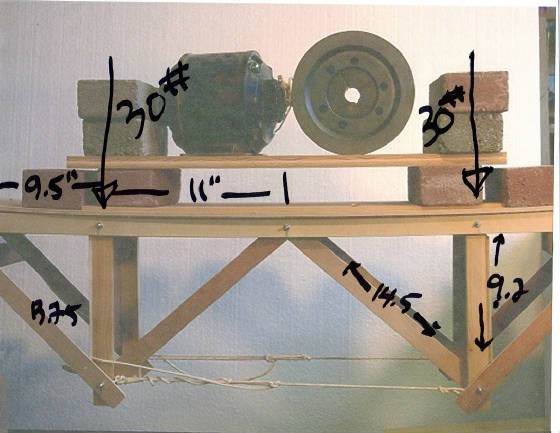
FIND; the tension in the middle of the bottom chord- the string
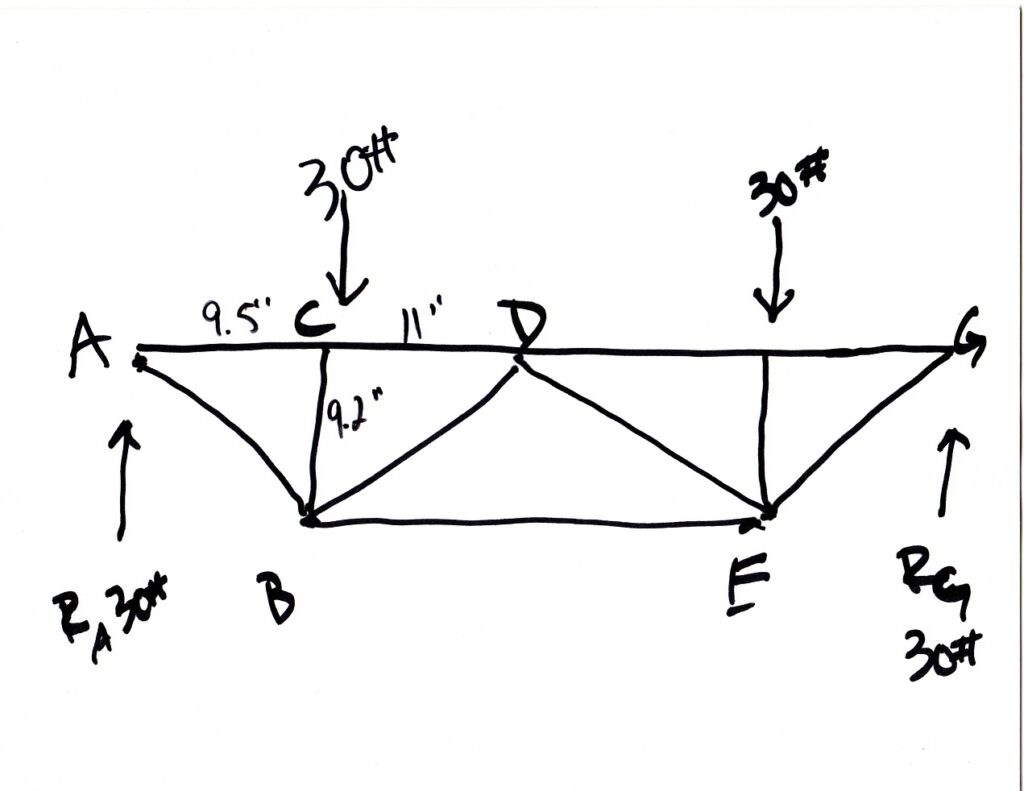
We could use the Method of Joints to find the internal
forces in the members, but we’ll use the Method
of Sections- it’s faster in this case.
First we cut through 3 members CD ..BD..BE
We’ll use the left “section” of the truss to find BE
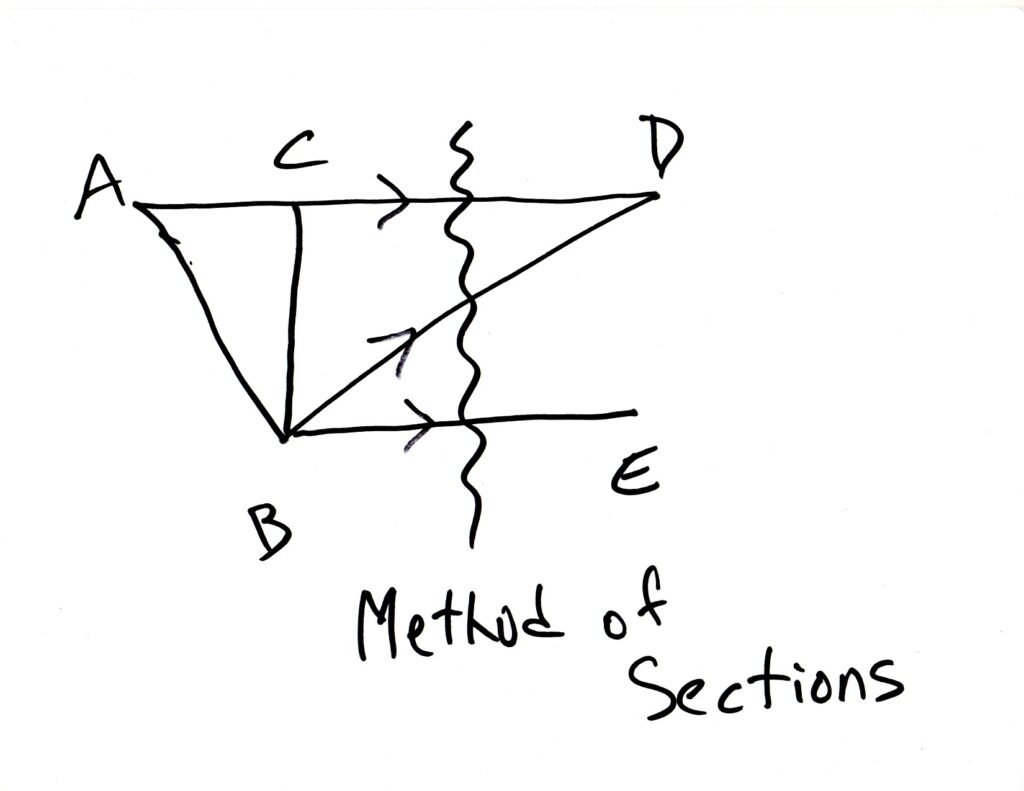
Since the truss isn’t moving, we say it’s in EQUILIBRIUM
The basic premise of the static equations applies:
1- the sum of the forces in the X direction is zero
2- the sum of the forces in the Y direction is zero
3- the sum of the moments is zero- it’s not ROTATING
the only equation we’ll need is the
sum of the moments about joint D are zero.
Why D?
Members CD and BD have their lines of force going through
joint D, so the distance from these lines to the joint is zero.
And since M = F x D …..if D is zero then M = 0 also.
This simplifies things- now we’ll only have 1 variable in the equation
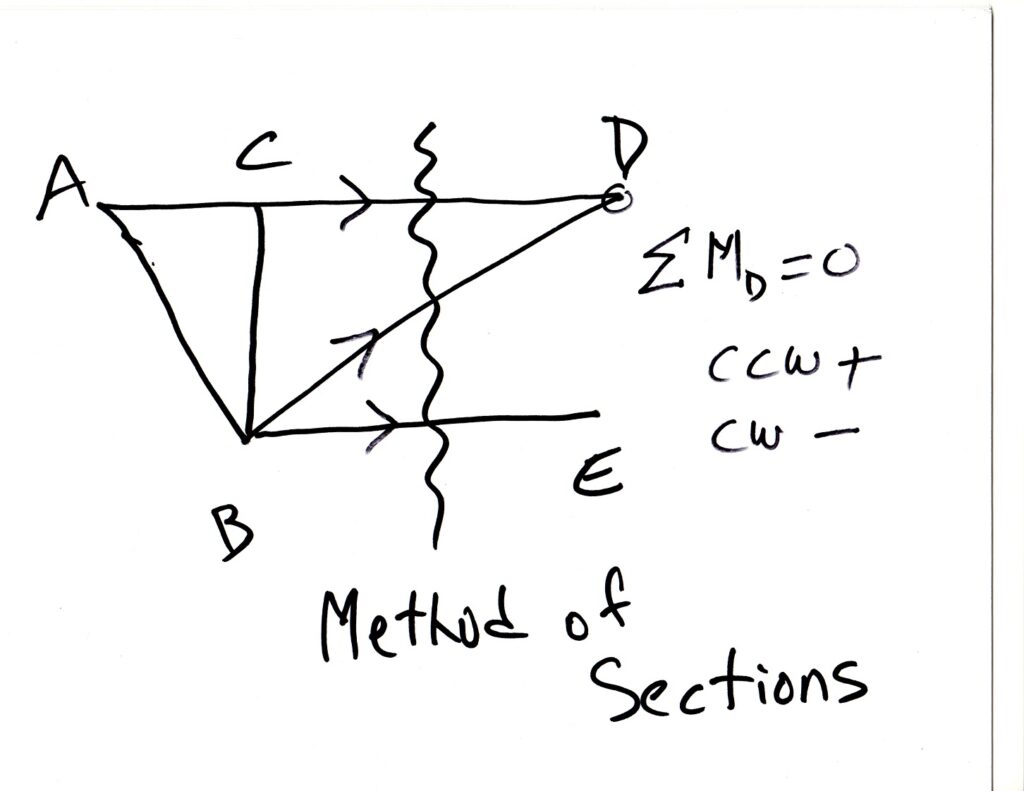
When using the Method of Sections, the convention
is to show the forces pulling away from the joint-
that means the forces are in tension.
If, when we solve the equations we get a positive
value, then the force was indeed in tension.
If we get a negative value, then the member
is in Compression.
Also by convention, Clockwise moments -(CW) are
negative and counter clockwise -(CCW) are positive.
Imagine the section of the truss has a pin through it
at joint D- so the truss is free to rotate about point D.
The force in member BE—(Fbe) goes to the right,
away from the joint. That means that if you’re pulling
on BE the truss will rotate around point D CCW.
so we’ll get a positive value.
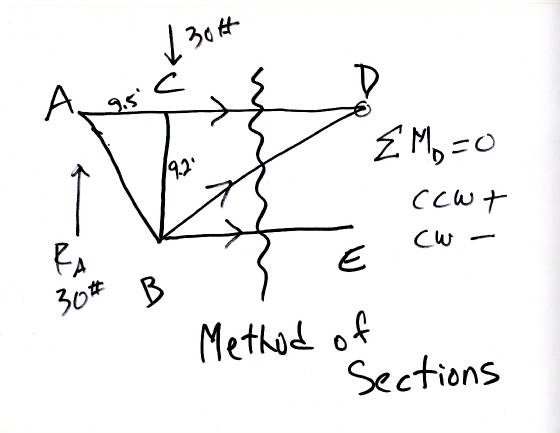
M= F x D
The force Fbe acts at a distance of 9.2″ from joint D.
Remember it’s the perpendicular distance from the
line of force to the joint.
So the first part of the equation is;
+Fbe x 9.2″
Next we have the 30# load. The line of force of
this load is 11″ from D. This force also rotates
the truss in a CCW direction so :
+30 x 11″
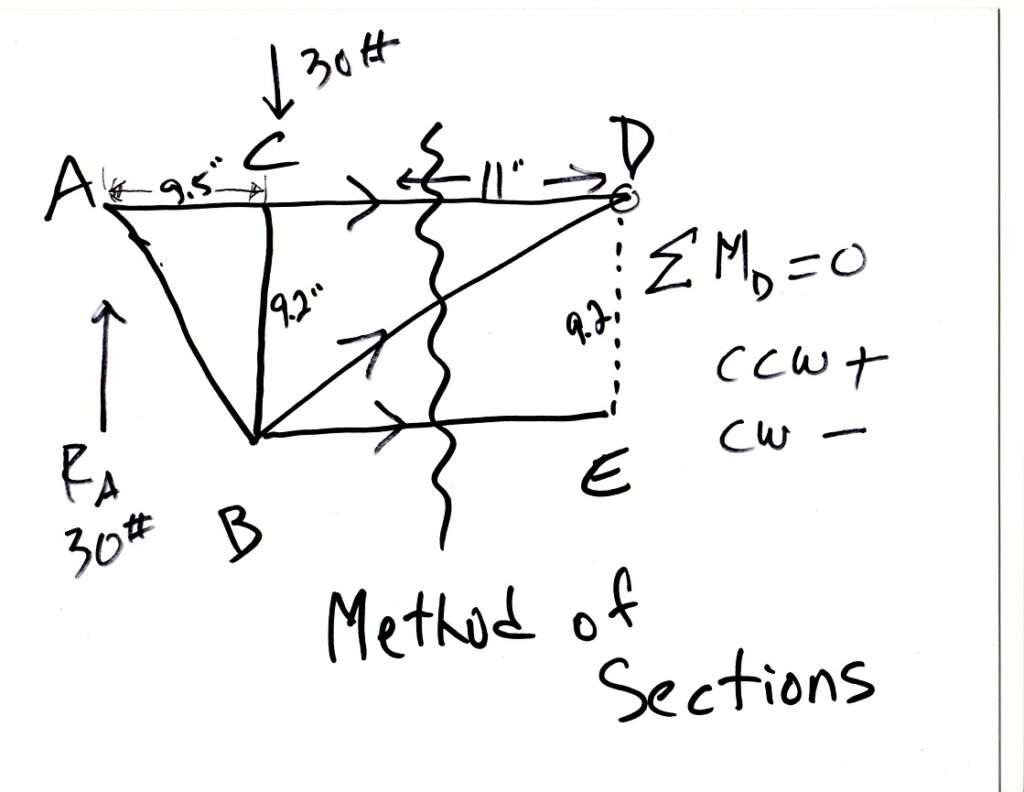
Next the reaction at A …30# (going up), will rotate
the truss CW–negative value.
This line of force is 9.5″ + 11″ = 20.5″ from D, so
-30 x 20.5
Now we have 1 equation with only 1 variable.
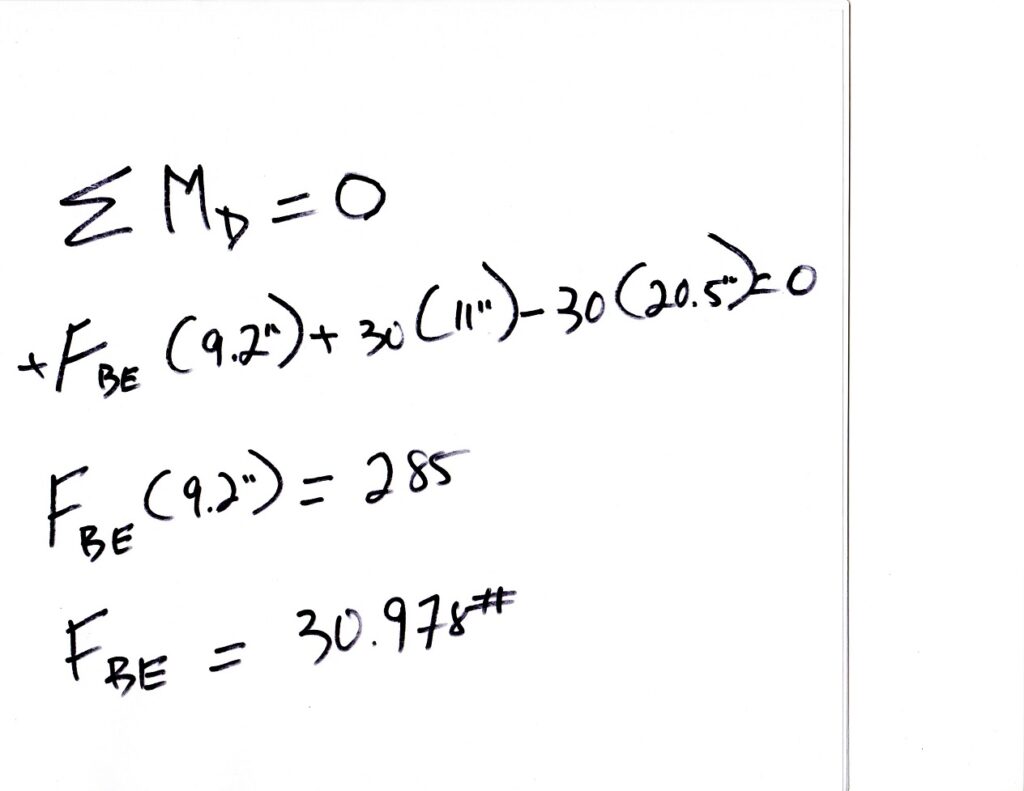
So there’s a Tension force of almost 31# in the string.
Or rather the 31# is the force in both strings together.
So the reading in the string is 15.489 lbs.